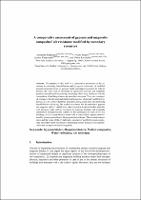Показать сокращенную информацию
Comparative Assessment of Gypsum and Magnesite Composites’ Air Resistance Modified by Secondary Resources
| dc.contributor.author | Kaklyugin, A. | |
| dc.contributor.author | Stupen, N. | |
| dc.contributor.author | Kastornykh, L. | |
| dc.contributor.author | Kovalenko, V. | |
| dc.date.accessioned | 2022-12-23T11:43:10Z | |
| dc.date.available | 2022-12-23T11:43:10Z | |
| dc.date.issued | 2022 | |
| dc.identifier.citation | Comparative Assessment of Gypsum and Magnesite Composites’ Air Resistance Modified by Secondary Resources / A. Kaklyugin [and etc.] // Lecture Notes in Networks and Systems : Networked Control Systems for Connected and Automated Vehicles. - Vol 509, № 2022. - S. 1561–1570. | ru_RU |
| dc.identifier.issn | 0255-5476 | |
| dc.identifier.uri | https://rep.brsu.by:443/handle/123456789/7919 | |
| dc.description.abstract | The purpose of this work is a comparative assessment of the resistance to alternating humidification and drying (air resistance) of modified pressed composites based on gypsum binder and magnesia cement. The studies have shown that the methods of gypsum and magnesia binders’ modification make it possible to obtain durable materials with increased water and air resistance by pressing. Gypsum and magnesite construction products become suitable for the construction of walls of low-rise buildings, as well as partitions in rooms with a humid indoor regime manufactured by pressing according to the proposed technologies. | ru_RU |
| dc.language.iso | en | ru_RU |
| dc.publisher | Springer | ru_RU |
| dc.subject | Gypsum binder, Magnesia binders, Molded composites, Water resistance, Air resistance | ru_RU |
| dc.title | Comparative Assessment of Gypsum and Magnesite Composites’ Air Resistance Modified by Secondary Resources | ru_RU |
| dc.type | Article | ru_RU |
